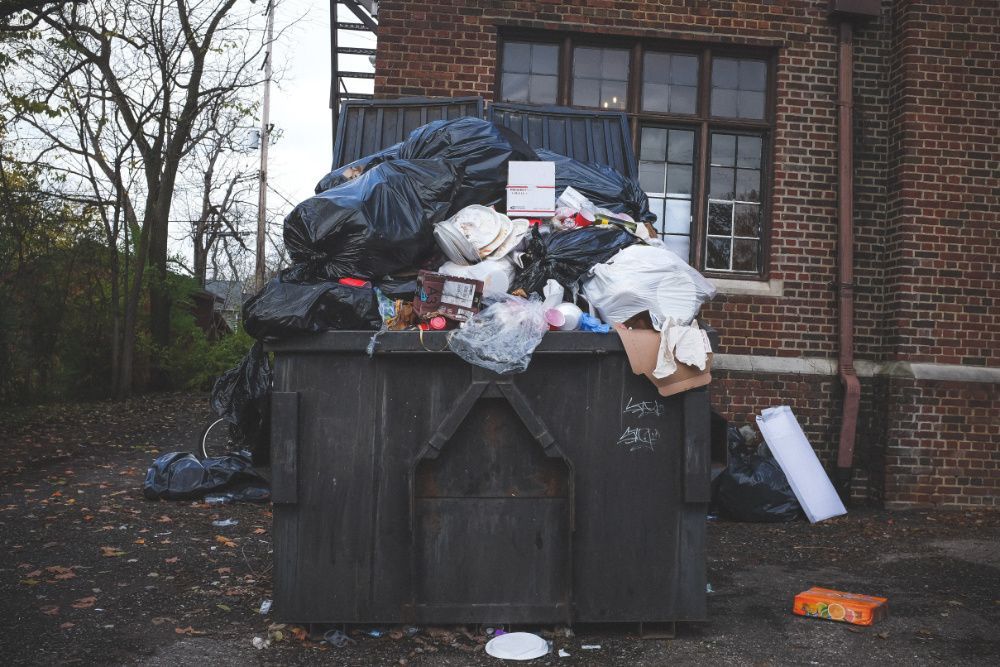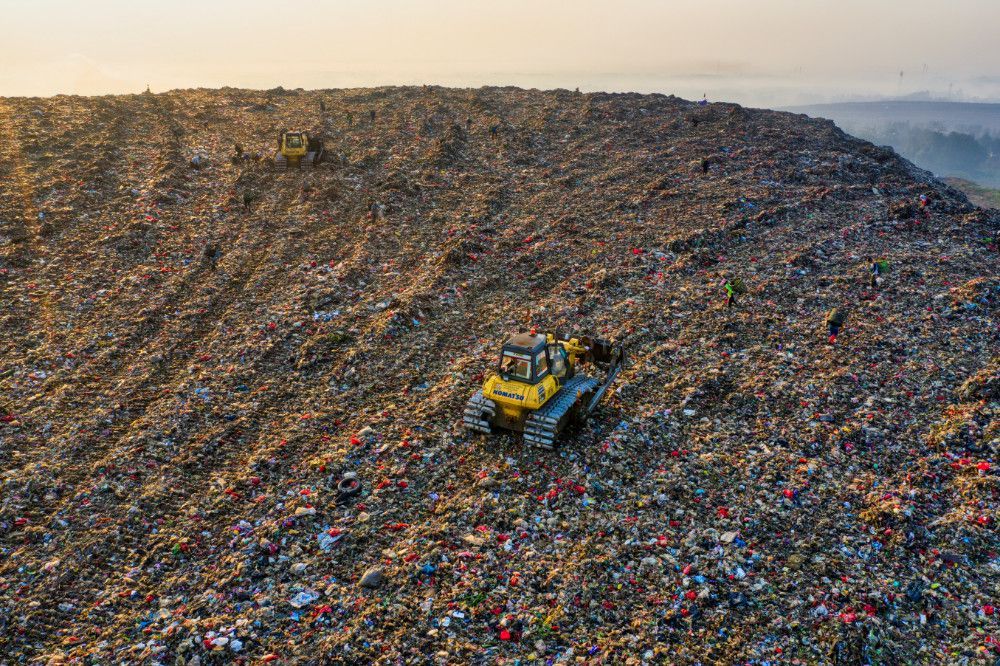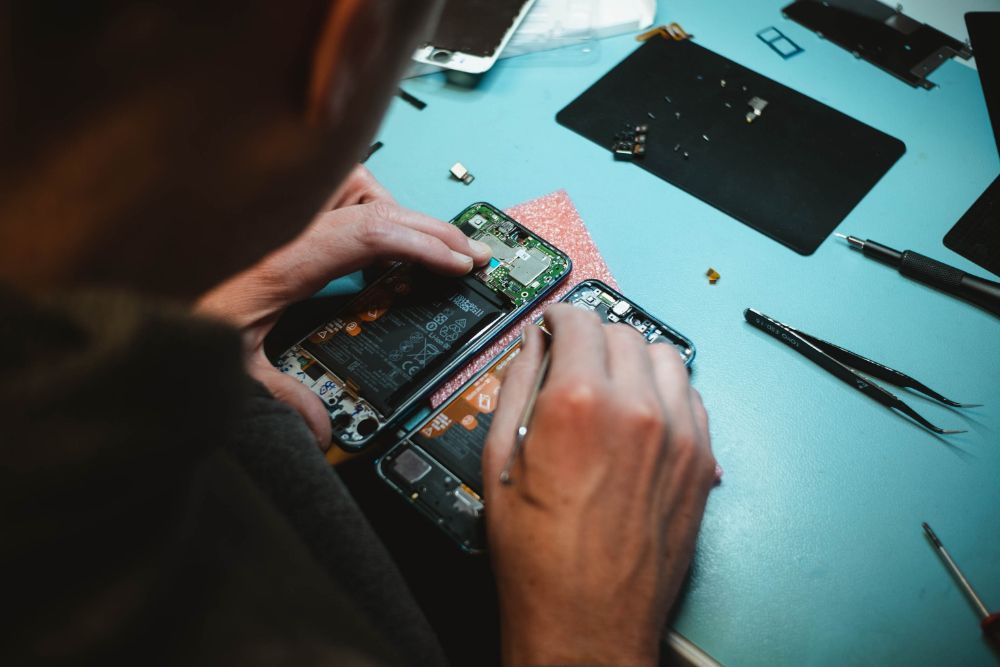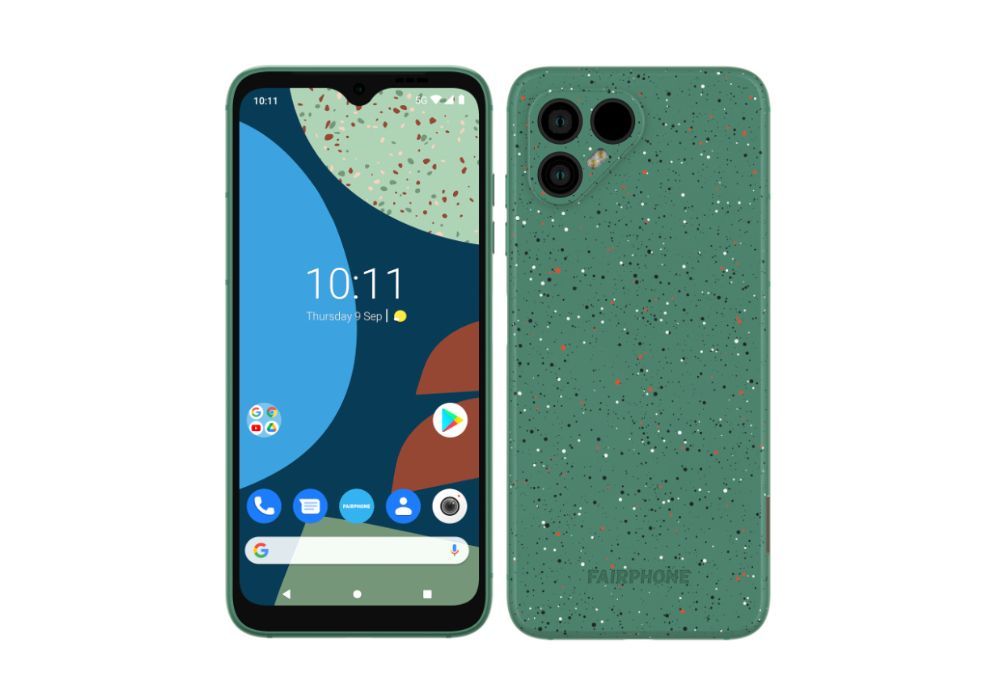Is ‘Single-Life’ the Next Big Issue as ‘Single-use’?
‘Single-Use’ Products Are Painfully Wasteful, But We Need to Watch Out for ‘Single-Life’ Products Too.
Single-use products are painfully wasteful aren’t they?
All those precious resources extracted, energy wasted, and emissions created to produce these products and ship them around the world. Just so we can use them for a few fleeting moments. Maximum environmental damage in exchange for minimal use; painful!
But the thing is, the number of times we use a product is not the only problem. Because no matter how many times we use any product, eventually that product will have served its purpose. And what happens then?

If any product, even a reusable product, ultimately ends up in the trash, that’s still a problem, isn’t it? Photo by NeONBRAND on Unsplash.
That’s where, in a lot of cases, we run into another problem; products we at Circular&Co. have started referring to as ‘single-life’ products. And in our minds, the environmental threat posed by these single-life products is just as significant as the single-use issue!
(We could of course just use the term ‘disposable’ instead of single-life, but disposable has somehow become pretty much synonymous with single-use products only — even though many reusable products are also essentially disposable as they can’t be recycled — so we feel the term single-life is needed to cover all disposable products).
But what in the heck are we actually talking about when we say ‘single-life products’?
What Do We Mean by Single-Life Products?
You know those wireless earbuds you bought a couple of years back that barely hold a charge anymore? Or that reusable stainless steel flask with the fancy painted graphic that’s seen better days? Or even that wine glass you cracked last night after a questionable number of beverages?
All these things should be pretty easy to recycle shouldn’t they? Or at least with the earbuds, getting them repaired or replacing the battery shouldn’t be much of an issue? Well…
We must remember that not all reusable products are sustainable! Not if they’re designed to be single-life! Even if you use your reusable coffee flask 100,000 times, if you can’t recycle it, it will still end up as waste eventually!
SPOILER ALERT HERE! (In more ways than one): For multiple reasons which we’ll explore in the next section, none of these products are easily repaired or recycled. Once you’re done with them, they will all likely end up as waste, adding to a global waste crisis that gets worse and worse every day. This is what we mean when we talk about ‘single-life’ products, and sadly, they are much more common than you’d think.
We would define a single-life product as any product that cannot practically be repaired and/or recycled. Or in other words, any product that is most likely to end up as waste once it has served its original purpose. This of course applies to both reusable and single-use products.
(We must remember that not all reusable products are sustainable! Not if they’re designed to be single-life! Even if you use your reusable coffee flask 100,000 times, if you can’t recycle it, it will still end up as waste eventually!)

Any product that ultimately ends up adding to the worldwide waste crisis once we’re done with it is a single-life product. Photo by Tom Fisk from Pexels.
Clearly then, single-life products, whether single-use or reusable, are a big part of the waste problem. But before we can start thinking about solutions, it’s probably best to consider some examples of single-life products, right?
Maybe we can find out what’s making them so difficult to repair and recycle.
Examples of Single-Life Products
Any product that cannot be easily repaired or recycled is a single-life product.
This includes products that can technically be recycled, but are not likely to be recycled because the process is too inconvenient, complex, or expensive. (Just about any product can be recycled if you’ve got the time, technology, and money to do so). It also includes products that can be repaired, but to repair them is so expensive that it’s cheaper to just buy a new one.
Unfortunately, there are way too many products that fall into this category:
Disposable Coffee Cups

They may look perfectly innocent, but many single-use coffee cups are ultimately single-life products. Photo by Angela Roma from Pexels.
Although these may seem quite innocent and easy to recycle, sometimes that might not be the case. Many disposable coffee cups are made from both paper and plastic, which complicates the recycling process. Specialist facilities are usually required to recycle them, and unfortunately, there isn’t always one of these facilities close by. Meaning many of these cups have to be considered single-life products.
Of course you could always use a reusable cup instead, but be careful which one you choose!
Reusable Cups and Flasks Made From Coated Stainless Steel
Very often, companies and industries with the best of intentions believe that they’re developing a green, recyclable solution, but they might not have the links with recycling firms to understand the ins and outs of ‘real-world’ recycling.
We say real-world recycling because although many products are technically recyclable in theory, if they’re not cost-effective to recycle, the likelihood is they won’t actually end up being recycled in reality.
This can often be the case for coated stainless steel cups and flasks. For this steel to be recycled, the powder coating/paint must first be removed. Removing the coating is usually quite tricky, and can make the recycling process unprofitable for recyclers. So many of these cups and flasks are never actually recycled.
What is basically nothing more than a misunderstanding between manufacturers and recyclers often ends up turning these beautifully designed, reusable, potentially sustainable products into single-life ones that are hardly green.
Beware of Single-Life Products Made From Recycled Content
Remember, not all reusables are sustainable, and that’s also the case when dealing with products made from recycled content.
Making products from recycled materials is a great idea when it’s done right. But if you can’t recycle the product again once you’re finished with it, it still ends up as waste. Just being made from waste doesn’t make it sustainable! Really it needs to not become waste too.
So it’s best to make sure that any product you buy that’s made from recycled content, isn’t a single-life product.
Remember, not all reusables are sustainable, and that’s also the case when dealing with products made from recycled content.
Pretty Much All Ceramics

Be careful with that coffee mug of yours because unfortunately, it is far from circular! More than likely, like most ceramics, it is a single-life product. Photo by Matt Hoffman on Unsplash.
This will probably come as a surprise to many, but most ceramics are pretty much destined to end up in the landfill. This is because, unfortunately, most recycling centres just don’t have the technical capability to recycle them.
There’s also not much profit to be found in ceramics recycling, so you should definitely hold on to that favourite tea mug of yours as long as you can (and even your least favourite!). As that’s a single-life product you’re dealing with.
Drinking Glasses (And Glass Cookware)
Drinking glasses, pyrex dishes, pretty much all glass cookware. These are all single-life products.
These items don’t get recycled because they’re treated with chemicals to help them withstand high temperatures. This gives them a higher melting point, and so they can’t be recycled along with other glass items. And it’s just not commercially viable to recycle them separately.
And good luck repairing them if they do happen to break!
Modern Electronics

As electronics become more advanced, repairing and recycling them seems to get more and more difficult. But does it have to be this way? Photo by ThisisEngineering RAEng on Unsplash.
Electronic waste is now the world’s fastest-growing domestic waste stream. Less than 20% of this waste is actually collected and recycled worldwide. And repairing electronic devices is also becoming more difficult and expensive than it has been in the past.
One thing contributing to this low recycling rate and lack of ‘repairability’ is actually the design of some electronics.
As our devices get smaller, more advanced, or often both, their designs inevitably become more complex. This usually requires more and smaller components, different types of screws, and in some cases, parts being glued together. Meaning that increasingly, it just isn’t cost-effective to repair or recycle these items, making many of them single-life.
(Not all of these devices need to be designed as single-life products though. We’ve got some wonderful examples proving just that in the next section!).
Other Examples of Single-Life Products
Certain types of furniture, mattresses, carpets, lightbulbs, duvets and pillows, plastic toothbrushes, tampons and disposable razors, and clothes containing more than one fabric, are just some other examples of products that for one reason or another, can often be difficult or expensive to repair or recycle. Not every single product that falls into these categories is a single-life product, but unfortunately, many currently are.
And many of the companies producing single-life products probably don’t realise that’s what they’re doing! They’re creating products that are technically repairable/recyclable, but they might not actually realise how unlikely it is that their products will actually be repaired or recycled.
So how do we get to a point where all (or at least most) products are being repaired and recycled? How do we make this single-life issue a thing of the past?
What is the Solution to the Single-Life Issue?
Like most things in this mad, modern world of ours, the issue of single-life products is a complex one. A combination of solutions will be needed if we want to solve it!
Here’s our take on what needs to happen.
Make Circular Design the Norm
The truth is, most of the factors that make any product difficult to repair or recycle can be avoided by getting the design right. This is where circular design can make a huge difference.
Circular design is all about making resources last, and minimising waste. We can address a whole lot of the issues involved with single-life products by re-designing them using circular principles like:
- Designing products to last as long as possible. (This includes making them easy to maintain, dismantle, and repair).
- Design for recycling, simple as that! (How easy a product is to recycle needs to become just as important as anything else during the design process. This might include choosing materials that can easily be recycled, or designing products so components are easily separated. If we can’t make a product that’s easy to recycle, maybe we shouldn’t make that product?)
- Basically, we need to start designing all our products with sound end-of-life management as a critical design feature. If we do this, then very few products should ever have to say YOLO ever again!
The truth is, most of the factors that make any product difficult to repair or recycle can be avoided by getting the design right. This is where circular design can make a huge difference.
Extended Producer Responsibility
How do we get companies to design their products with end-of-life in mind?
Well one way could be to make them more responsible for the eventual disposal of those products.
This is called ‘extended producer responsibility’, and might involve things like requiring companies to cover the waste disposal costs for products they produce. (If they design their products right, these costs never have to be very much at all!)
Policy like this is already on its way to becoming law in the UK for packaging. Maybe soon this might be the case for products too, which would surely make single-life product design much less prevalent.
Make Repairing Easier!

The easier products are to repair, the longer they last. And so, the less waste they create! Photo by Kilian Seiler on Unsplash.
Repairing, if possible, is always better than recycling. Making product repair as accessible as we possibly can is one of the more obvious solutions to the single-life issue. Remember it’s always been reduce and reuse first hasn’t it!? But the problem is, particularly with electronics, repairing has been getting less and less possible. Thankfully though, in places, this seems to slowly be changing.
In the UK, a ‘right to repair’ law was introduced just this summer which requires manufacturers of some electrical products to make spare parts available to consumers and third-party repair services. And France actually introduced a world-first ‘repairability index’ policy this year which forces producers of certain e-products to tell consumers how repairable their products are.
Neither of these new laws are perfect yet, and they don’t cover all electronics, but they’re definitely a welcome start. We still feel a lot more needs to be done with the initial design of the products though.
(Stick those repairability scores on every product out there and we reckon those designs will soon get much more planet-friendly!)
(Maybe there should be recyclability scores too???)
Make Recycling Easier!
If all products are designed with recycling in mind, we should be able to use our current recycling infrastructure to recycle most things. But there is probably also room to re-think and re-design some of our recycling systems to meet the products halfway. (We by no means claim to be experts in recycling, but there’s always some room for improvement isn’t there!?)
It could be that government incentives and investment might help to achieve this, or even collaboration between manufacturers and recyclers.
Or to make things even simpler, companies could always start offering product takeback programs. That way customers can just send used products back to them directly for recycling.
Surely nothing could be easier than that?
Collaboration
Product takeback programs require a little collaboration between manufacturers and their customers. Manufacturers make it possible for customers to send back old products free of charge to be recycled. Customers then actually take the time to send the products back. And hey presto! The products get turned into new products, and everyone’s a winner.
Now imagine if manufacturers, customers, recyclers, governments, designers and everyone involved worked together in this way. We could make single-life products a thing of the past in no time.
For Now, Watch What You Buy

If you do your research before buying any new product, it’s usually possible to avoid single-life products! Photo by Heidi Fin on Unsplash.
Until that happens though, as consumers, what we can start doing straight away is paying attention! Whenever we can, before buying anything, we can do a little research into the repairability and recyclability of that product. If it looks like a single-life product, then maybe there’s a better option somewhere else?
Maybe, there’s a circular option?
Examples of Circular (Multiple-Life) Products Available Today
We feel these all count as proof that if you get the design right, no product ever has to be single-life!
Probably the best way to make sure you’re not buying a single-life product is to choose a genuinely circular one instead.
Below are some of our favourite examples of circular products. We feel these all count as proof that if you get the design right, no product ever has to be single-life!
Fairphone

The Fairphone is proof that even complex electronic products don’t have to be single-life. It’s all in the design!
Like many modern electronic devices, smartphones can be difficult to repair or recycle for multiple reasons. Problematic to disassemble, parts glued together, spare parts hard to come by, you name it. But it doesn’t have to be this way!
Amsterdam-based smartphone brand Fairphone is proof that even modern electronics can be designed for complete circularity. Fairphone is a real game-changer in the smartphone industry for a number of reasons:
– 5-Year Extended Manufacturer Warranty:
Fairphones are designed to last, and each phone comes with a massive 5-year warranty to actually encourage repair instead of replacement.
– Modular Design:
These smartphones are designed so that each component can be easily replaced or upgraded. If an individual part stops working, you can replace just that part without fuss, instead of replacing the whole phone!
– They Sell All the Spare Parts on Their Website:
Acquiring the spare parts will never be an issue, because you can actually buy pretty much every individual component these phones contain through their website.
– Disassemble and Repair Yourself:
Fairphones are designed to be easily disassembled using a standard screwdriver. None of the parts are glued together, making it possible for you to repair the phone yourself. (Fairphone received a 9.3/10 score in that French repairability index we mentioned earlier!)
– Upgradable Parts!:
Fairphone’s modular design also makes it possible to upgrade certain parts on old models. So having a phone with a better camera than your current one doesn’t have to mean buying a whole new phone.
– Electronic Waste Neutral:
For every Fairphone sold, Fairphone recycles or gives an old phone a second life. So every time they sell a new phone, they ensure that a whole phone’s worth of potential electronic waste is avoided.
– Take-back programme:
When it comes to recycling your old phone, Fairphone makes this as simple as possible by doing it for you. You can actually send Fairphone any old model of phone and they’ll either refurbish or recycle it! They even give you a Fairphone gift card with the value of your old phone in return.
Clearly, Fairphone is making products that are about as far away from single-life as you can get. And they’re managing to do this with complicated electronic devices.
If this isn’t proof that single-life products can be avoided through thoughtful, circular design, then nothing is.
Gomi
But here’s a little more proof!
Gomi, based in Brighton UK, make handmade portable speakers from recycled plastic bags and repurposed e-bike batteries. And these speakers are destined to live many many lives.
If your Gomi speaker ever breaks, you can send it back to them and they’ll repair it for a reasonable fee. If it’s unfixable, they’ll give you money off your next order, and recycle the whole thing into new products.
(Gomi designs their speakers so that all materials and components can be reused in next-generation products. So nothing goes to waste. Further proof that with the right design, no product needs to be single-life).
Tooth
Tooth is another UK-based brand using circular design to overcome a common single-life product-related issue. (Plastic toothbrushes are famously difficult to recycle because they’re usually made from multiple types of plastic).
They make toothbrushes from recycled aluminium with detachable, industrially-compostable heads.
The aluminium base of these toothbrushes lasts for decades — Tooth suggests it should be robust enough to last a lifetime — and is 100% recyclable, and easy to recycle, as it’s comprised of a single material.
So you can keep this base for life, recycle it if you ever need to, and just swap out the head for a new one every few months. Tooth is currently working on making heads that are home compostable, meaning they’re very close to creating a virtually zero-waste toothbrush.
By switching to Tooth, you should never have to buy a single-life plastic toothbrush again.
Let’s Not Let Single-Life Become the New Single-Use
Whether a product is single-use or not, if it can’t easily be repaired or recycled once you’re done with it, it will more than likely end up as waste.
This is the problem we face with single-life products, but as we have seen, it is a completely solvable problem.
Brands like Fairphone, Gomi, Tooth and many others are already proving that it doesn’t have to be this way. If everyone starts embracing circular design like them, we can say goodbye to single-life products for good.
This article was created by Adam Millett of Word Chameleon, in collaboration with Circular&Co.